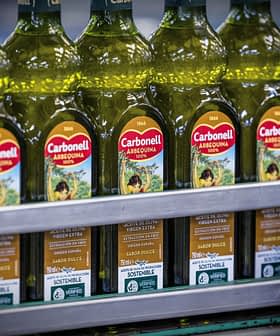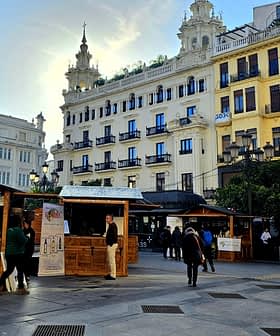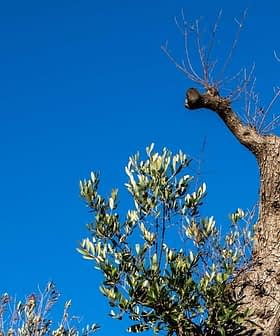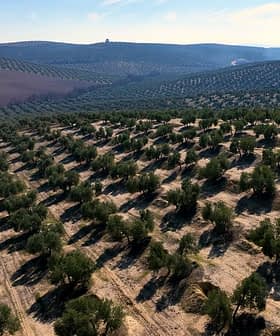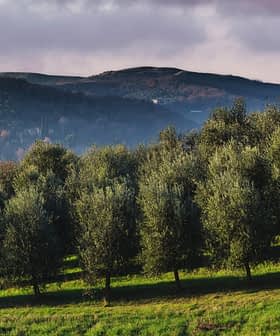By Daniel Williams
Olive Oil Times Contributor | Reporting from Barcelona
The countryside of Jaén, Spain is the largest olive growing region in the world, and at present some 2 million tons of olives are in the process of maturation. Most of these olives, which are central to both the local and national economies, are not insured thus leaving the olive farmer vulnerable if they are lost due to inclement weather.
As with all harvests, Mother Nature can be generous during one year and cruel in the next. A good example of this unpredictability can be seen in the frosts that gravely affected Spanish olive plantations during January and February of 2005. During these months, some 18,700 hectares of olive trees in Jaén were destroyed.[1] The cold spell devastated the olive trees in the region destroying more than half of the following year’s predicted harvest. At the time, the Spanish central government and the Andalucían regional government were forced to dish out loans to the affected farmers totaling somewhere in the range of 25 million Euros.
2005. During these months, some 18,700 hectares of olive trees in Jaén were destroyed.[1] The cold spell devastated the olive trees in the region destroying more than half of the following year’s predicted harvest. At the time, the Spanish central government and the Andalucían regional government were forced to dish out loans to the affected farmers totaling somewhere in the range of 25 million Euros.
Similarly, in 2007, cold weather in San Juan, Argentina destroyed scores of olive groves, totaling nearly 70% of the province’s total product. Earlier this year, cold weather once again made its descent on the Argentinean countryside and predictions for the resulting campaign were equally pessimistic.[2]
These recent unpredictable meteorological conditions have motivated the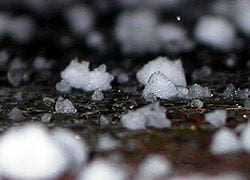 secretary of the Union of Small Farmers (UPA), Ana Dolores Rubia to help raise awareness among plantation owners about the importance of securing insurance for their crop. Many farmers are ignorant of the process itself and this campaign seeks to further increase awareness. It is predicted that many more farmers would opt for the insurance plans if they were aware of the conditions of the policy, as the Spanish central government, through the Ministry of the Environment, subsidizes almost half of the cost.
secretary of the Union of Small Farmers (UPA), Ana Dolores Rubia to help raise awareness among plantation owners about the importance of securing insurance for their crop. Many farmers are ignorant of the process itself and this campaign seeks to further increase awareness. It is predicted that many more farmers would opt for the insurance plans if they were aware of the conditions of the policy, as the Spanish central government, through the Ministry of the Environment, subsidizes almost half of the cost.
The UPA, a professional farmers union which represents the interests of more than 80,000 small scale farmers and cattle breeders, has found that only 3% of olive growers have insured their plantations against a disaster.[3] The other 97% are left without recourse in the event of an unforeseen catastrophe.

- Lorenzo Ramos, UPA (Spain) Secretary General

If you consider this percentage in the context of the millions of kilos of olives that are produced, the number of olives not covered by insurance is dizzying. The central government is ready to engage in subsidized policies to defend the Spanish olive harvest. These, however, are no longer valid for this year’s harvest, as policies implemented this year will only guarantee next year’s crop.
On September 27th of this year, the Official Bulletin of the State (BOE) published the various conditions of the harvest insurance plan whose subscription period runs between the 1st of October and the 15th of December.[4] At present, the current prices to insure the olives can range between 21 and 66 euros per 100 kilos of olives. Seedlings can be additionally insured for 2 to 8 euros per unit. The olive harvest is insured up until it is collected or when the fruit has surpassed commercial maturation.
.
.
1 “Acta de Pleno Odinario 11 de Junio 2009″
2 “Los fuertes fríos dañaron plantaciones sanjuaninas de olivos”
3 “Sólo tres de cada cien aceitunas tienen seguro”
4 “Boletín Oficial del Estado, Lunes 27 de septiembre (PDF)”

